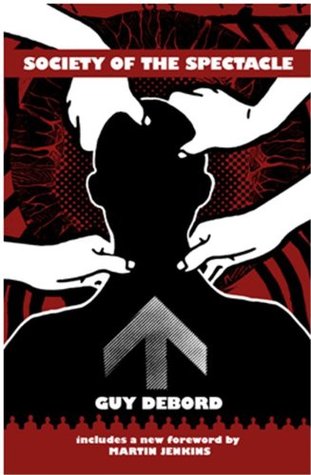More on this book
Community
Kindle Notes & Highlights
McDonalds for example can be safely criticised by all and sundry for their employment policies (‘McJobs’), disgusting food, insidious marketing and environmentally damaging production techniques. What is missed in such criticisms is the fact that they are not a ‘rogue company’ but exemplify a tendency immanent within the market economy as a whole. To be sure, certain companies may operate within the global economy with a maximal ‘efficiency’ but in this they represent the goal or type to which other companies are driven.
Thus opposition to McDonalds for any or all of the reasons given above ends up as a badge of middle class distinction (‘Oh, we don’t eat there - we eat organic!’) that is nothing but a reflection of a ‘symbolic capital’ exercised in a different set of consumer ‘choices’ - that is, it is still tied to commodity fetishism.
The specialization of images of the world evolves into a world of autonomized images where even the deceivers are deceived.
The spectacle presents itself simultaneously as society itself, as a part of society, and as a means of unification. As a part of society, it is the focal point of all vision and all consciousness. But due to the very fact that this sector is separate, it is in reality the domain of delusion and false consciousness: the unification it achieves is nothing but an official language of universal separation.
The spectacle is not a collection of images; it is a social relation between people that is mediated by images.
The first stage of the economy’s domination of social life brought about an evident degradation of being into having — human fulfillment was no longer equated with what one was, but with what one possessed.
The spectacle is the ruling order’s nonstop discourse about itself, its never-ending monologue of self-praise, its self-portrait at the stage of totalitarian domination of all aspects of life. The fetishistic appearance of pure objectivity in spectacular relations conceals their true character as relations between people and between classes: a second Nature, with its own inescapable laws, seems to dominate our environment. But the spectacle is not the inevitable consequence of some supposedly natural technological development. On the contrary, the society of the spectacle is a form that
...more
the modern spectacle depicts what society could deliver, but in so doing it rigidly separates what is possible from what is permitted.
27
The reigning economic system is a vicious circle of isolation. Its technologies are based on isolation, and they contribute to that same isolation. From automobiles to television, the goods that the spectacular system chooses to produce also serve it as weapons for constantly reinforcing the conditions that engender “lonely crowds.” With ever-increasing concreteness the spectacle recreates its own presuppositions.
The spectacle was born from the world’s loss of unity, and the immense expansion of the modern spectacle reveals the enormity of this loss.
In the spectacle, a part of the world presents itself to the world and is superior to it. The spectacle is simply the common language of this separation. Spectators are linked solely by their one-way relationship to the very center that keeps them isolated from each other.
The more he contemplates, the less he lives; the more he identifies with the dominant images of need, the less he understands his own life and his own desires. The spectacle’s estrangement from the acting subject is expressed by the fact that the individual’s gestures are no longer his own; they are the gestures of someone else who represents them to him. The spectator does not feel at home anywhere, because the spectacle is everywhere.
The spectacle is capital accumulated to the point that it becomes images.
we recognize our old enemy the commodity, which seems at first glance so trivial and obvious, yet which is actually so complex and full of metaphysical subtleties.
The fetishism of the commodity — the domination of society by “intangible as well as tangible things” — attains its ultimate fulfillment in the spectacle, where the real world is replaced by a selection of images which are projected above it, yet which at the same time succeed in making themselves regarded as the epitome of reality.
The world at once present and absent that the spectacle holds up to view is the world of the commodity dominating all living experience. The world of the commodity is thus shown for what it is, because its development is identical to people’s estrangement from each other and from everything they produce.


